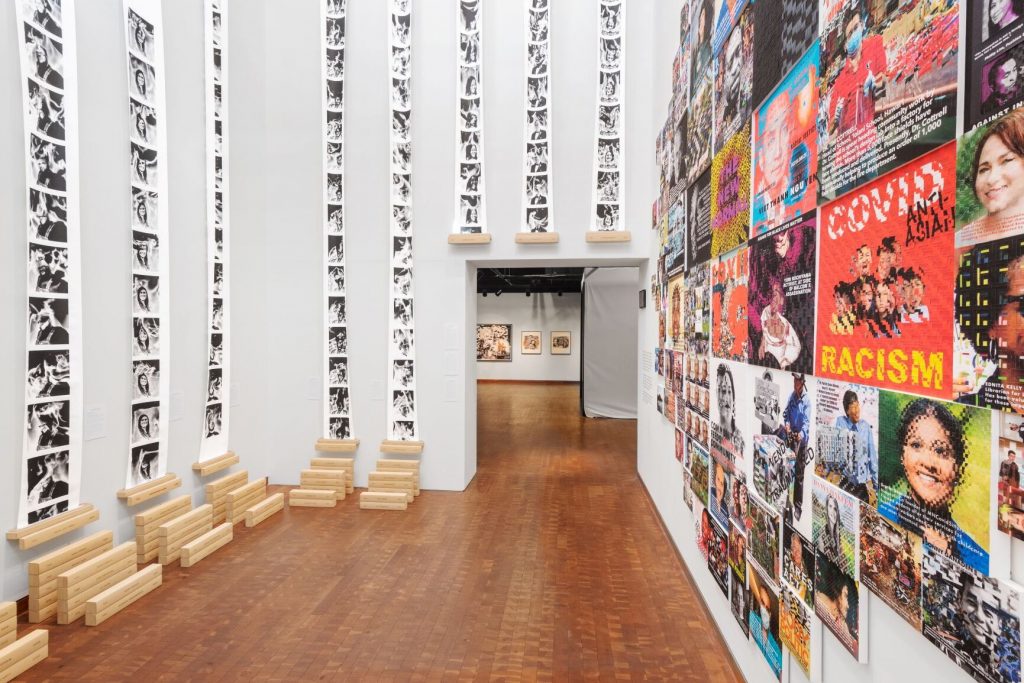
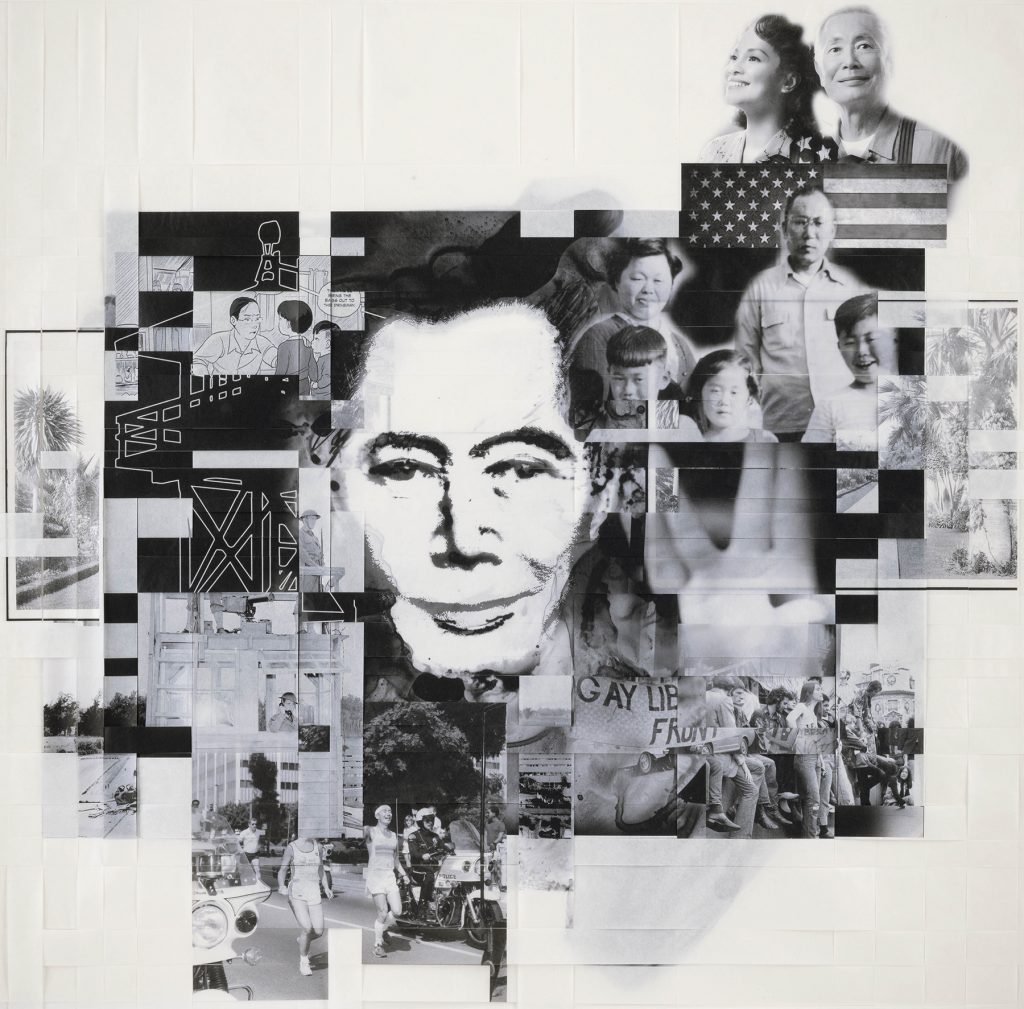
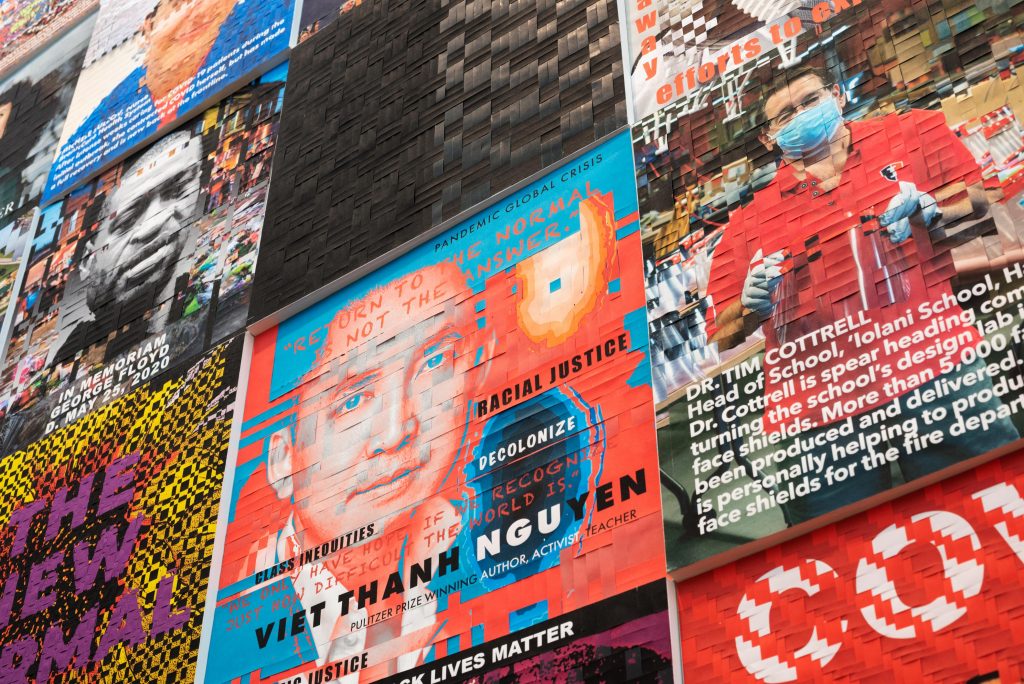
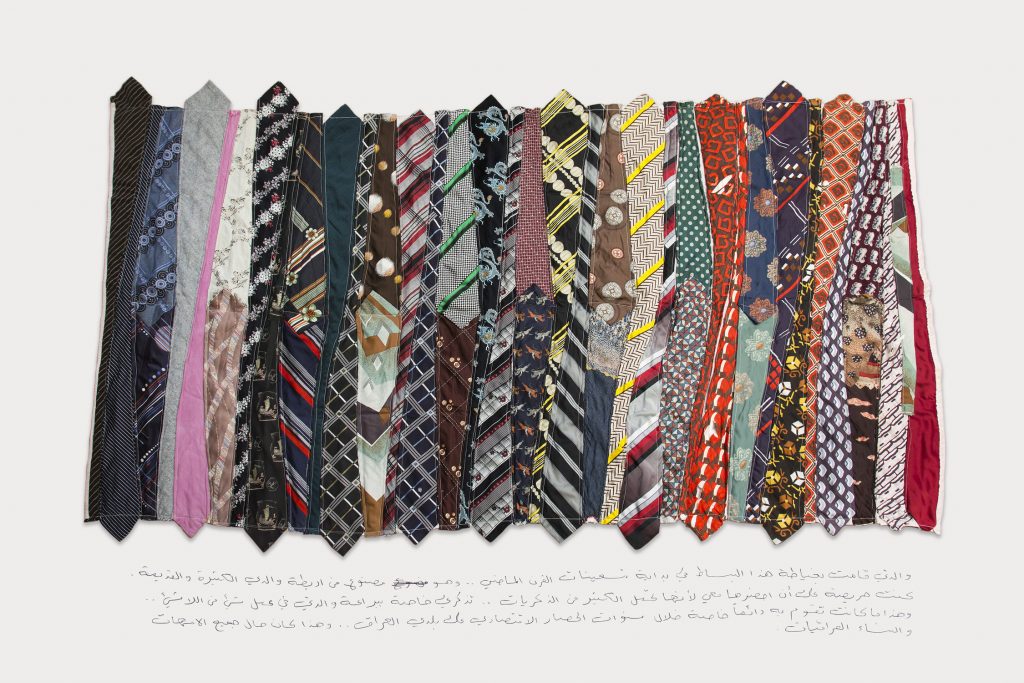
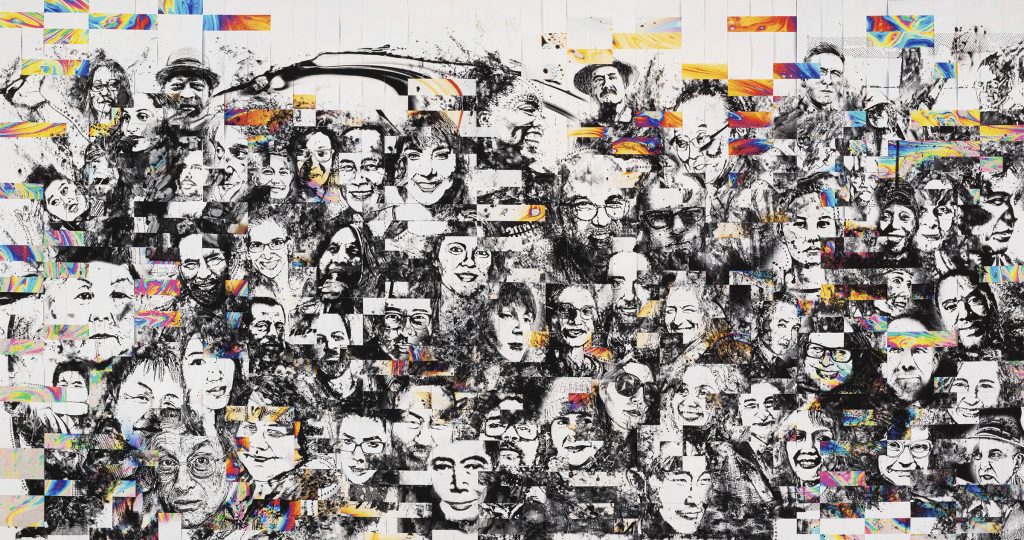





Alexander Woodman
In museums, we learn about the past, see the present, and can foresee the future. A museum can only and certainly be a bridge between countries, people, and their traditions in a broader sense. I consider museums as another world where we learn the history of the world and humanity. A museum is also a school, which stands at the crossroads of people from diverse backgrounds. Museums are platforms, which empower us to bring civilization to a higher level.
Japanese American National Museum (JANM) has initiated a mission to connect the history, culture, and tradition of two nations outside of their territorial context, namely Japan and the Arab world. This status has also enriched the lives of neighboring communities in the United States (U.S.), which has been supported by the people of America and its government in many ways. Therefore, the JANM can certainly play an extensive role in securing layers of relationships between the Japanese and Arab worlds. The museum can certainly become a source of gained experience and the transpired vision for other nations.
Recently, during my hometown visit, I spent some time at JANM and had a wonderful conversation with higher management, trying to find parallels between Japanese and Arab experience globally.
Can the Japanese American National Museum (JANM) play a meaningful role in the relationship of Japanese and Arab history and culture? This is a question in relation between two people and two nations.
As people – Japanese Americans and Arab Americans – share similar stories dealing with assimilation, homeland cultural contrasts compared to the U.S, and discrimination. Since its foundation, the Japanese American National Museum has been presenting and will continue to exhibit many of these themes as part of its exposition and programs.
Culturally, both peoples are often considered “outsiders” or “foreigners” by Americans and suffered discrimination at various points in history by the U.S. government. For Japanese Americans, this was after World War II, and for Arab Americans, this was after 9/11. Japanese Americans were excluded and forcibly removed from the West Coast by the U.S. government and sent to federally-run World War II concentration camps in remote U.S. areas. In comparison, after September 11th, 2001, Arab Americans were targeted for detention and interrogation by the U.S. government.
On October 27th, 2016, during the Tateuchi Democracy Forum an excellent discussion and comparison of these two events were presented at the Japan American National Museum. Panelists included Karen Korematsu, founder of the Fred T. Korematsu Institute, Dr. Irum Shiekh, filmmaker, and author of “Detained Without Cause: Muslim Americans’ Stories of Detention and Deportation after 9/11.” In addition, Seema Ahmad, Federal Public Defender and Chair of the Muslim Public Affairs Council was among the participants.
During this event, former U.S. Transportation Secretary Norman Y. Mineta, the Chairman, Board of Trustees of the Japanese American National Museum, noted, “We have to keep talking about these things. And we have to keep reminding people that we don’t have to be vigilantes. But we should really be vigilant in the protection of our own constitutional rights and helping each other out.”
Can the Japanese American National Museum be considered a living entity?
The Japanese American National Museum has always considered itself as a “hybrid” museum. One that offers exhibits inside the JANM building, as well as serves as a gathering spot, or ‘town hall’ for Japanese Americans and all people willing to explore their heritage, history, and culture. The museum accomplishes this through its forums, hosting exhibitions from other museums, such as the Arab American National Museum, as well as special cultural collaboration programs that partner with diverse groups and organizations.
Since opening to the public in 1992, JANM has presented over 70 exhibitions on its premises, in addition to 17 traveling exhibits to the Smithsonian Institution, Ellis Island Museum in the United States, and several leading museums in Japan and South America.
Japanese and Arab nations represent rich history and culture. A museum can be foreseen as the ground for collaboration. The more we learn from each other’s history, culture, and all other aspects of life, the closer we are. Can this be regarded as an authentic approach and justification for the establishment of the Japanese American National Museum?
Yes, the museum often collaborates with other museum to share exhibits and programs about different cultural and national groups. In 2013, one such exhibition was organized by Arab American National Museum, “Patriots & Peacemakers: Arab Americans in Service to Our Country.” The exhibition displayed stories of heroism and self-sacrifice that reaffirm the important role of Arab Americans in the United States, through three specific areas of service: the U.S. Armed Forces, the Peace Corps, and Diplomatic Service,
Earlier in 2005, “Fighting for Democracy: Who is the “We” in “We, the People”?” exhibition was organized by JANM’s National Center for the Preservation of Democracy. The unique idea behind this exhibition was to highlight the stories of seven individuals and to show how women and minorities have redefined the meaning of “we” in “we the people.” These stories highlighted the conditions minorities faced before, during World War II, and in the post-war periods. The aim was to encourage visitors to reflect critically on freedom, history, and, the ongoing struggle for democratic existence in a diverse America.
The exhibition was premiered in Los Angeles and toured nationally, including the University of Texas, San Antonio’s Institute of Texan Cultures, the National World War II Museum in New Orleans, the Tuskegee Institute National Historic Site in Alabama, the National Archives in Washington, D.C., the National Civil Rights Museum in Memphis, Tennessee, the Bishop Museum in Honolulu, Hawai’i, as well as the National Constitution Center in Philadelphia and the Arab American National Museum in Dearborn, Michigan.
Can the Japanese American National Museum be a lead model for the creation of Japan-Arab relations?
The musuem focuses on the American experience of Japanese Americans. Therefore, we often collaborate with the Arab American National Museum because they also are focused on the Arab-American experience. In early 2000s, JANM assisted the Arab American National Museum in developing operations plan.
In 2016, we have organized the exhibition “Is It 1942 Again? Overcoming Our Fears and Upholding Constitutional Rights for All,” as part of the Los Angeles Day of Remembrance program. Outstanding speakers eloquently shared their stories of struggles. This initiative paid tribute to the courage and perseverance of men, women, and children who were imprisoned during World War II and encouraged the audience to apply the lessons of Japanese American history to today’s context.
I would like to mention that there are unique similarities between the experience of Japanese Americans and Arab Americans in regards to ethnic registries and immigration bans that have affected both of our communities in the U.S. Therefore, an art exhibition by artists from Japanese and Arab communities would be an exciting and provocative theme to collaborate.
Since you have a standing relationship with the Arab American National Museum due to similarities in mission and vision, can this be transported into different environments, namely between Japan and the Arab world?
Yes. In 2018, we hosted a very moving exhibition, “What We Carried: Fragments & Memories from Iraq & Syria.” It was a traveling exhibition organized by the Arab American National Museum. The exhibition documented the life-changing journey of Iraqi and Syrian refugees and shed light on the trials and tribulations they experienced in their search for stability. Photographer and author Jim Lommasson invited refugees to share a personal item, which was significant part during their travels to America, such as a family snapshot, heirloom dish, or childhood toy.
The exhibition explored the resilience of refugees from the Arab world and what it means to be displaced, leave everything behind and start a new life in a new country. This theme echoes the debate about the imprisonment of Japanese Americans during World War II when prisoners were allowed to bring “only what they could carry.” The combination of carried objects and personal stories illustrated the common threads that bind all humanity: love for family, friendships, and the places people call home.
As part of “What We Carried,” a panel discussion was organized to share stories of migration, the pursuit of a better life, and dreams for the future with the “Refugee Chair.” Artist Charity Ruther created the Refugee Chair from jackets found in Greece used by those who crossed from Syria and Afghanistan.
In 2017, “What Does the Japanese American Experience Tell Us About the Proposed Muslim Registry?” forum was organized by JANM in partnership with Zócalo Public Square and the University of California, Los Angeles (UCLA). The panel discussion raised the issue of the Muslim registry by looking at it in the light of the historical perspective provided by the Japanese-American experience, reflecting on various aspects of current and past government policies and lessons to be learned from the history. The key takeaway from the discussion was to be prepared for the very real possibility of a “trigger moment” that is likely to activate existing security devices and questionable public policies.
Are there current or upcoming JANM projects and exhibitions that you would like to share with the audience?
In the beginning of 2021, we have organized a contemporary art exhibition “Transcendients: Heroes at Borders” by Taiji Terasaki. The exhibition honored individuals who advocate and fight for those who face discrimination, prejudice, and inequality at borders both real and imagined. Through video projections and photographic weavings visitors to this multimedia exhibition were invited to learn about, reflect on, and celebrate heroes in Los Angeles, across the nation, and within their own lives. The heroes featured in the exhibition were identified through extensive outreach to communities and neighborhoods throughout Los Angeles and beyond.
On June 3rd, 2021, a new U.S. postage stamp was launched virtually. The stamp commemorates second-generation Japanese Americans, also known as nisei, who served in World War II and formed one of the most distinguished American fighting units. The stamp was designed by Antonio Alcalá based on a photograph of a member of the 442nd Regimental Combat Team whose motto was “Go for Broke.” The photograph was taken in 1944 at a railroad station in France.
Last but not least, one of the most exciting and inspiring projects to discuss within this answer is the media project “A Life in Pieces: The Diary and Letters of Stanley Hayami,” which will bring Stanley Hayami’s wartime diary to life. Stanley Hayami was a Japanese-American teenager imprisoned with his family during World War II at the Heart Mountain camp in Wyoming. The words and sketches of Stanley Hayami became a window into his daily life and feelings. Stanley talks about his family’s imprisonment, conscription, and the importance of serving to country. His camp recordings and wartime letters are brought to life through a virtual 3D experience that can be accessed via a smartphone.